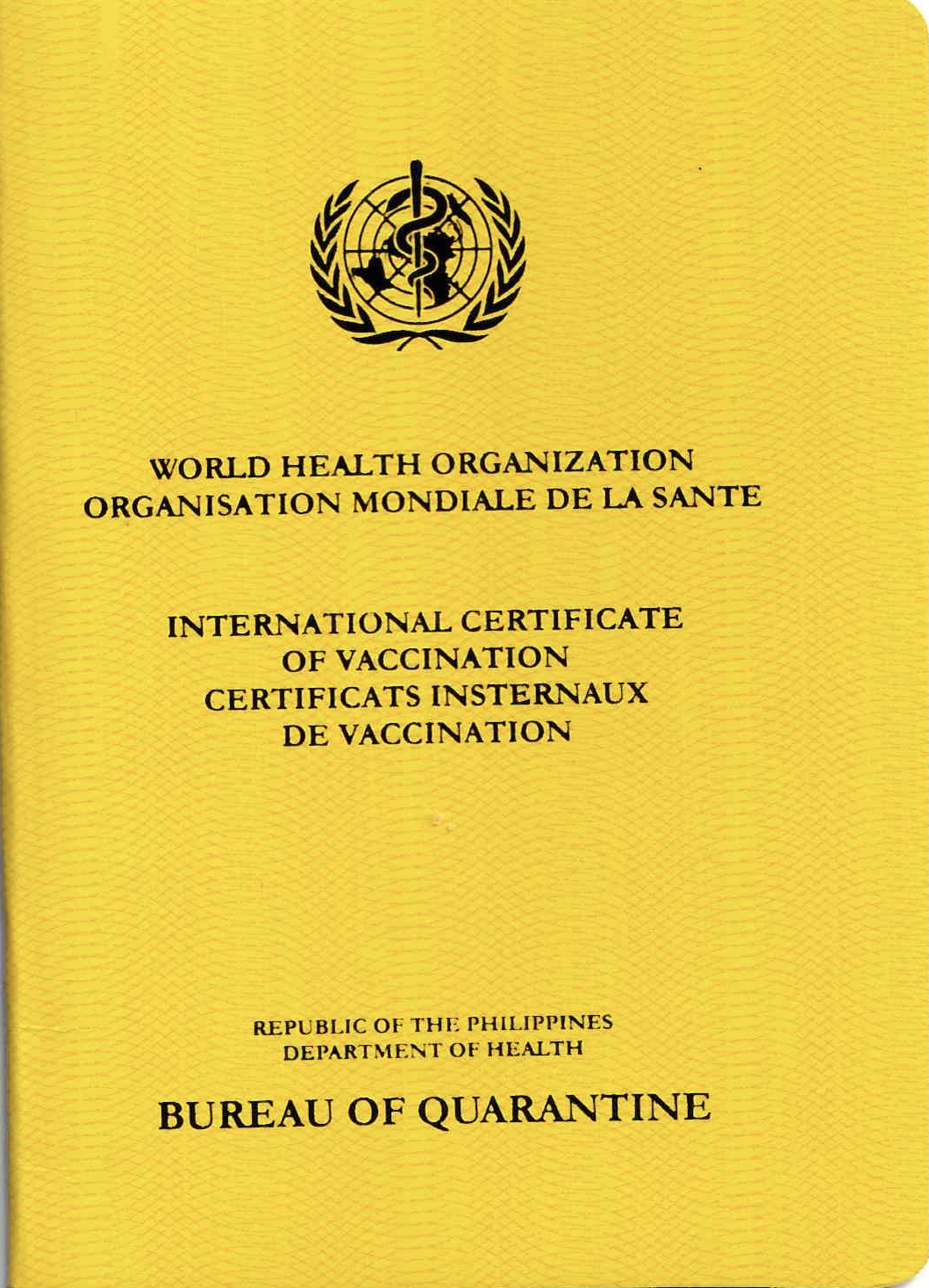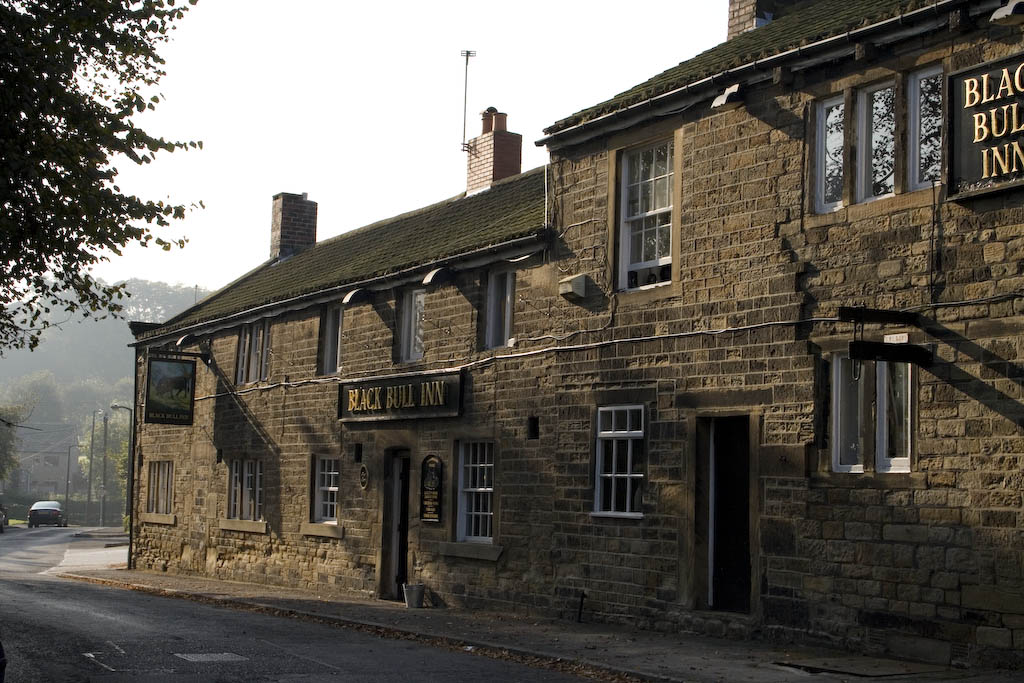|
Bradford Smallpox Outbreak Of 1962
An outbreak of smallpox in Bradford in 1962 first came to attention on 11 January 1962, when a cook from the children's hospital in Bradford, West Riding of Yorkshire, England, presented with an pyrexia of unknown origin, unexplained fever and was found to have changes in her blood similar to another sick person at the nearby St Luke's Hospital, Bradford, St Luke's Hospital, both samples appearing compatible with smallpox. The index case was later discovered to be a nine-year old girl who arrived in the UK on 16 December 1961 from Karachi, Pakistan, where there was an ongoing epidemic of smallpox. The outbreak resulted in 14 cases of smallpox and contact tracing of over 1,400 individuals. Within five days either 250,000 or 285,000 people had been vaccinated. Six deaths were directly due to the disease and the outbreak was officially declared over on 12 February 1962. Background Between December 1961 and April 1962, authorities became aware of an ongoing epidemic of smallpox in ... [...More Info...] [...Related Items...] OR: [Wikipedia] [Google] [Baidu] |
West Yorkshire
West Yorkshire is a metropolitan and ceremonial county in the Yorkshire and Humber Region of England. It is an inland and upland county having eastward-draining valleys while taking in the moors of the Pennines. West Yorkshire came into existence as a metropolitan county in 1974 after the reorganisation of the Local Government Act 1972 which saw it formed from a large part of the West Riding of Yorkshire. The county had a recorded population of 2.3 million in the 2011 Census making it the fourth-largest by population in England. The largest towns are Huddersfield, Castleford, Batley, Bingley, Pontefract, Halifax, Brighouse, Keighley, Pudsey, Morley and Dewsbury. The three cities of West Yorkshire are Bradford, Leeds and Wakefield. West Yorkshire consists of five metropolitan boroughs ( City of Bradford, Calderdale, Kirklees, City of Leeds and City of Wakefield); it is bordered by the counties of Derbyshire to the south, Greater Manchester to the south-west, ... [...More Info...] [...Related Items...] OR: [Wikipedia] [Google] [Baidu] |
Abattoir
A slaughterhouse, also called abattoir (), is a facility where animals are slaughtered to provide food. Slaughterhouses supply meat, which then becomes the responsibility of a packaging facility. Slaughterhouses that produce meat that is not intended for human consumption are sometimes referred to as ''knacker's yards'' or ''knackeries''. This is where animals are slaughtered that are not fit for human consumption or that can no longer work on a farm, such as retired work horses. Slaughtering animals on a large scale poses significant issues in terms of logistics, animal welfare, and the environment, and the process must meet public health requirements. Due to public aversion in different cultures, determining where to build slaughterhouses is also a matter of some consideration. Frequently, animal rights groups raise concerns about the methods of transport to and from slaughterhouses, preparation prior to slaughter, animal herding, and the killing itself. History Until ... [...More Info...] [...Related Items...] OR: [Wikipedia] [Google] [Baidu] |
Malaria
Malaria is a mosquito-borne infectious disease that affects humans and other animals. Malaria causes symptoms that typically include fever, tiredness, vomiting, and headaches. In severe cases, it can cause jaundice, seizures, coma, or death. Symptoms usually begin ten to fifteen days after being bitten by an infected mosquito. If not properly treated, people may have recurrences of the disease months later. In those who have recently survived an infection, reinfection usually causes milder symptoms. This partial resistance disappears over months to years if the person has no continuing exposure to malaria. Malaria is caused by single-celled microorganisms of the ''Plasmodium'' group. It is spread exclusively through bites of infected ''Anopheles'' mosquitoes. The mosquito bite introduces the parasites from the mosquito's saliva into a person's blood. The parasites travel to the liver where they mature and reproduce. Five species of ''Plasmodium'' can infect and be spread by h ... [...More Info...] [...Related Items...] OR: [Wikipedia] [Google] [Baidu] |
International Certificate Of Vaccination Or Prophylaxis
The International Certificate of Vaccination or Prophylaxis (ICVP), also known as the Carte Jaune or Yellow Card, is an official vaccination report created by the World Health Organization (WHO). As a travel document, it is a kind of ''medical passport'' that is recognised internationally and may be required for entry to certain countries where there are increased health risks for travellers. The ICVP is not an immunity passport; the primary difference is that vaccination certificates such as the ICVP incentivise individuals to obtain vaccination against a disease, while immunity passports incentivise individuals to get infected with and recover from a disease. Various schemes for health passports or vaccination certificates have been proposed for people who have been COVID-19 vaccine, vaccinated against COVID-19. Name The ICVP's nickname ''Yellow Card'' or its French language, French equivalent ''Carte Jaune'' derives from the yellow colour of the document. The fact that yel ... [...More Info...] [...Related Items...] OR: [Wikipedia] [Google] [Baidu] |
Birstall, West Yorkshire
Birstall is a large village in the metropolitan borough of Kirklees, West Yorkshire, England. It is part of Birstall and Birkenshaw ward which had a population of 16,298 at the 2011 census. Historically in the West Riding of Yorkshire, and part of the Heavy Woollen District, the town is approximately south-west of Leeds and situated close to the M62 motorway. The village is situated between Leeds, Bradford, Huddersfield and Wakefield. History Birstall's name is derived from the Old English ''byrh'' and ''stall'' meaning a fortified site. The town is not mentioned in the ''Domesday Book'' but is alluded to as one of two settlements in Gomersal. '' Pigot's National Commercial Directory for 1828–29'' listed it as one of the four villages which make up the township of Gomersal. The hill fort itself would have been situated high above the village, to one side of the present-day Raikes Lane, which heads towards Gildersome, and onto Leeds. In prehistoric days, trackways ran in v ... [...More Info...] [...Related Items...] OR: [Wikipedia] [Google] [Baidu] |
Oakwell Hospital
Oakwell Hospital was originally a fever hospital built on a hill top in Birstall in West Riding of Yorkshire, England, caring for chiefly people with scarlet fever and diphtheria. From 1948 it catered for the elderly and in 1962, the elderly were transferred out as a smallpox outbreak in Bradford necessitated it to be designated for the isolation of cases of smallpox Smallpox was an infectious disease caused by variola virus (often called smallpox virus) which belongs to the genus Orthopoxvirus. The last naturally occurring case was diagnosed in October 1977, and the World Health Organization (WHO) c .... References Hospitals in West Yorkshire Birstall, West Yorkshire Fever hospitals {{UK-hospital-stub ... [...More Info...] [...Related Items...] OR: [Wikipedia] [Google] [Baidu] |
Wharfedale Hospital
Wharfedale Hospital (formerly known as Wharfedale General Hospital) is located in the market town of Otley, West Yorkshire, England, and is managed by the Leeds Teaching Hospitals NHS Trust. History The facility has its origins in an infirmary built for the Wharfedale Union Workhouse on the Newall Carr Road in 1873. An infirmary with 70 beds was added in 1907 and was administered by the Wharfedale Board of Guardians until 1930. It went on to become the Otley County Institution and then became Otley County Hospital. The facility joined the National Health Service as Otley County Hospital in 1948 and later became Wharfedale General Hospital. In the 1990s it became clear the existing building was unsuitable for purpose. A new hospital was commissioned and the old site redeveloped into an estate called Wharfedale Park, with many of the original buildings being converted into flats. The new hospital, located just to the west of the old facility, was officially opened by the Princess ... [...More Info...] [...Related Items...] OR: [Wikipedia] [Google] [Baidu] |
Kano Ikeda
Kano Ikeda (1887–1960), was a Japanese American professor of pathology who wrote several articles relating to his experience of the 1924–1925 Minnesota smallpox epidemic. Ikeda's 1925 report on laboratory findings in haemorrhage smallpox were used by Derrick Tovey to diagnose early cases of smallpox during the Bradford smallpox outbreak of 1962. Ikeda was a native of Tokyo, Japan, and came to the United States in 1904. In 1953, he was the first person from Japan to become a U.S. citizen in Minnesota. He worked at Miller Hospital in St. Paul and at the University of Minnesota The University of Minnesota, formally the University of Minnesota, Twin Cities, (UMN Twin Cities, the U of M, or Minnesota) is a public land-grant research university in the Twin Cities of Minneapolis and Saint Paul, Minnesota, United States. .... Selected publications * * * References 1887 births 1960 deaths American pathologists Japanese emigrants to the United States American academic ... [...More Info...] [...Related Items...] OR: [Wikipedia] [Google] [Baidu] |
Plasma Cells
Plasma cells, also called plasma B cells or effector B cells, are white blood cells that originate in the lymphoid organs as B lymphocytes and secrete large quantities of proteins called antibodies in response to being presented specific substances called antigens. These antibodies are transported from the plasma cells by the blood plasma and the lymphatic system to the site of the target antigen (foreign substance), where they initiate its neutralization or destruction. B cells differentiate into plasma cells that produce antibody molecules closely modeled after the receptors of the precursor B cell. Structure Plasma cells are large lymphocytes with abundant cytoplasm and a characteristic appearance on light microscopy. They have basophilic cytoplasm and an eccentric nucleus with heterochromatin in a characteristic cartwheel or clock face arrangement. Their cytoplasm also contains a pale zone that on electron microscopy contains an extensive Golgi apparatus and centriolesEM ... [...More Info...] [...Related Items...] OR: [Wikipedia] [Google] [Baidu] |
Nuclear Bodies
Nuclear bodies (also known as nuclear domains, or nuclear dots) are membraneless structures found in the cell nuclei of eukaryotic cells. Nuclear bodies include Cajal bodies, the nucleolus, and promyelocytic leukemia protein (PML) nuclear bodies (also called PML oncogenic dots). Nuclear bodies also include ND10s. ND stands for nuclear domain, and 10 refers to the number of dots seen. Nuclear bodies were first seen as prominent interchromatin structures in the nuclei of malignant or hyperstimulated animal cells identified using anti-sp100 autoantibodies from primary biliary cirrhosis and subsequently the promyelocytic leukemia (PML) factor, but appear also to be elevated in many autoimmune and cancerous diseases. Nuclear dots are metabolically stable and resistant to nuclease digestion and salt extraction. A nuclear body subtype is a clastosome suggested to be a site of protein degradation. Structure Simple nuclear bodies (types I and II) and the shells of complex nuclear ... [...More Info...] [...Related Items...] OR: [Wikipedia] [Google] [Baidu] |
Granulocyte
Granulocytes are cells in the innate immune system characterized by the presence of specific granules in their cytoplasm. Such granules distinguish them from the various agranulocytes. All myeloblastic granulocytes are polymorphonuclear. They have varying shapes (morphology) of the nucleus (segmented, irregular; often lobed into three segments); and are referred to as polymorphonuclear leukocytes (PMN, PML, or PMNL). In common terms, ''polymorphonuclear granulocyte'' refers specifically to "neutrophil granulocytes", the most abundant of the granulocytes; the other types ( eosinophils, basophils, and mast cells) have varying morphology. Granulocytes are produced via granulopoiesis in the bone marrow. Types There are four types of granulocytes (full name polymorphonuclear granulocytes): * Basophils * Eosinophils * Neutrophils * Mast cells Except for the mast cells, their names are derived from their staining characteristics; for example, the most abundant granulocyte is the ... [...More Info...] [...Related Items...] OR: [Wikipedia] [Google] [Baidu] |






